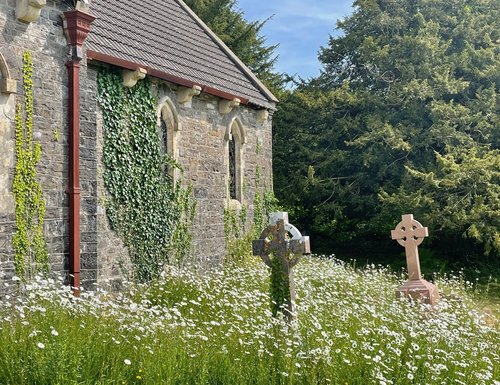Social climbers
There is a belief that climbing plants are destructive to brick or stone walls, causing damage or erosion and increasing the risk of damp by trapping moisture. Huw Davies disagrees
The results of a study carried out by the Royal Horticultural Society in collaboration with the University of Reading, that began in 2020, have recently been published in the scientific journal, Building and Environment and have revealed some surprising discoveries.
The study majored on three species of climbing plant – the Common Ivy (Hedera Helix), the Boston Ivy (Parthenocissus tricuspidata) and the Climbing Hydrangea (Pileostegia viburnoides) – and their impact on temperature and humidity when grown as building cover.
![Boston Ivy [Pixabay]](https://stdavids.contentfiles.net/media/images/Boston_Ivy_Pixabay.width-500.jpg)

The cooling effect of the shade cast by the leaves reduced both internal and external wall temperatures and also, therefore, the wide swings between day and night temperatures, which is a major factor in structural surface damage.
The Ivy species especially reduced and stabilised relative humidity levels in both summer and winter time, again reducing the possibility of surface damage to stone and brickwork caused by significant fluctuations in the humidity gradient. This living, protective coating has been projected to reduce heating bills by as much as 20% during winter months.
The study confirmed findings of a previous experiment involving historic buildings, in 2011, that compared those with bare, external walls with those coated in a protective layer of leaves. This study concluded that species of Ivy provide a form of living insulation that can reduce the likelihood of structural deterioration caused by salt and frost and even trap atmospheric pollution that could be detrimental to building materials.
As we are also looking at creating wild spaces in many of our churchyards to attract wildlife, climbing plants also have the added benefit of providing good habitat for small birds, insects, bees and, in some cases, small vertebrates.
To quote the botanist James Wong, “Imagine if there was a new material that could cool cities and cut energy bills, all while looking beautiful and costing a fraction of the price of alternatives….self-cleaning and carbon negative? The truth is that we have had this miracle material all along, but rather than appreciating it, we have spent huge amounts of time worrying about how to rip it out” (New Scientist 30 March 2024).
Rather than being concerned over the possibility of Ivy damaging our church walls, the evidence suggests that to reduce our heating bills and our carbon footprint and to minimise damage to their stonework, we should actually be encouraging it to grow.